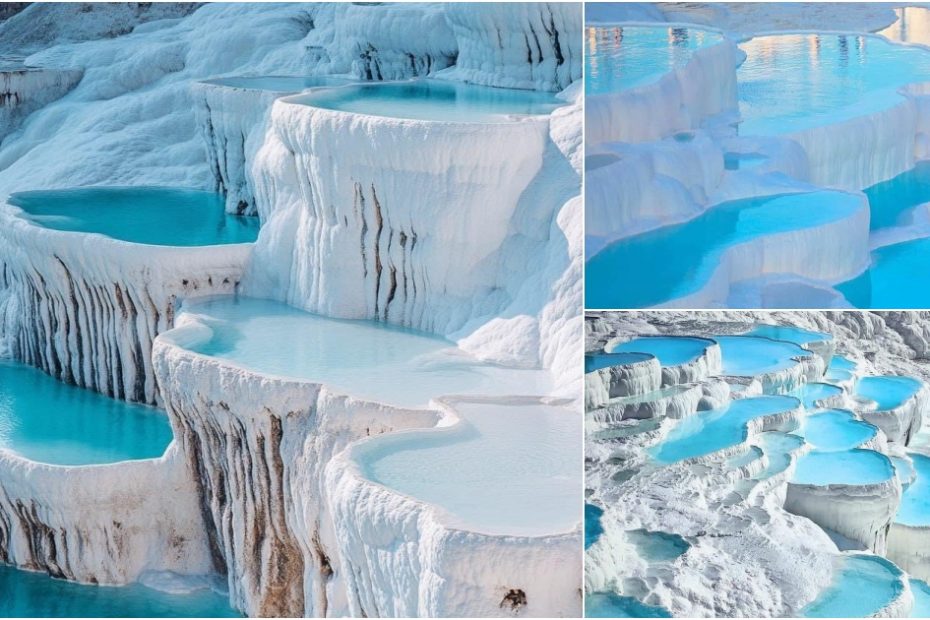Pamukkale, located in southwestern Turkey, is home to one of the world’s most stunning natural wonders: its iconic thermal pools. Known as the “Cotton Castle” in Turkish, Pamukkale is famous for its terraces of white travertine, created by mineral-rich hot springs. Over thousands of years, these thermal waters have flowed down the hillside, depositing calcium carbonate, which solidifies into travertine, giving the site its unique white appearance.

The natural pools, filled with warm, mineral-rich water, are not only visually breathtaking but also have long been believed to offer therapeutic benefits. The water is rich in minerals like calcium and magnesium, and has been used for centuries by those seeking to heal skin conditions, bone ailments, and general well-being. The ancient Greeks and Romans once flocked to Pamukkale for these reasons, and it continues to attract visitors from around the globe.

Pamukkale’s terraces are formed in cascading layers, with each pool reflecting the blue sky, creating a mesmerizing contrast against the white stone. The pools range in size, with some large enough to sit in while enjoying the warmth of the natural spring water. Visitors are often allowed to wade through designated areas, experiencing the soothing effects of the waters firsthand while taking in the panoramic views of the surrounding landscape.

Besides the thermal pools, Pamukkale is also home to the ancient city of Hierapolis, a UNESCO World Heritage site. The ruins of Hierapolis, including a well-preserved amphitheater and Roman baths, add to the historical allure of the location, making it both a natural and cultural treasure.

In conclusion, Pamukkale’s natural pools are not only a geological marvel but also a historical and therapeutic destination. The combination of breathtaking beauty, ancient history, and healing waters makes it a must-see location for travelers seeking both relaxation and cultural enrichment.



